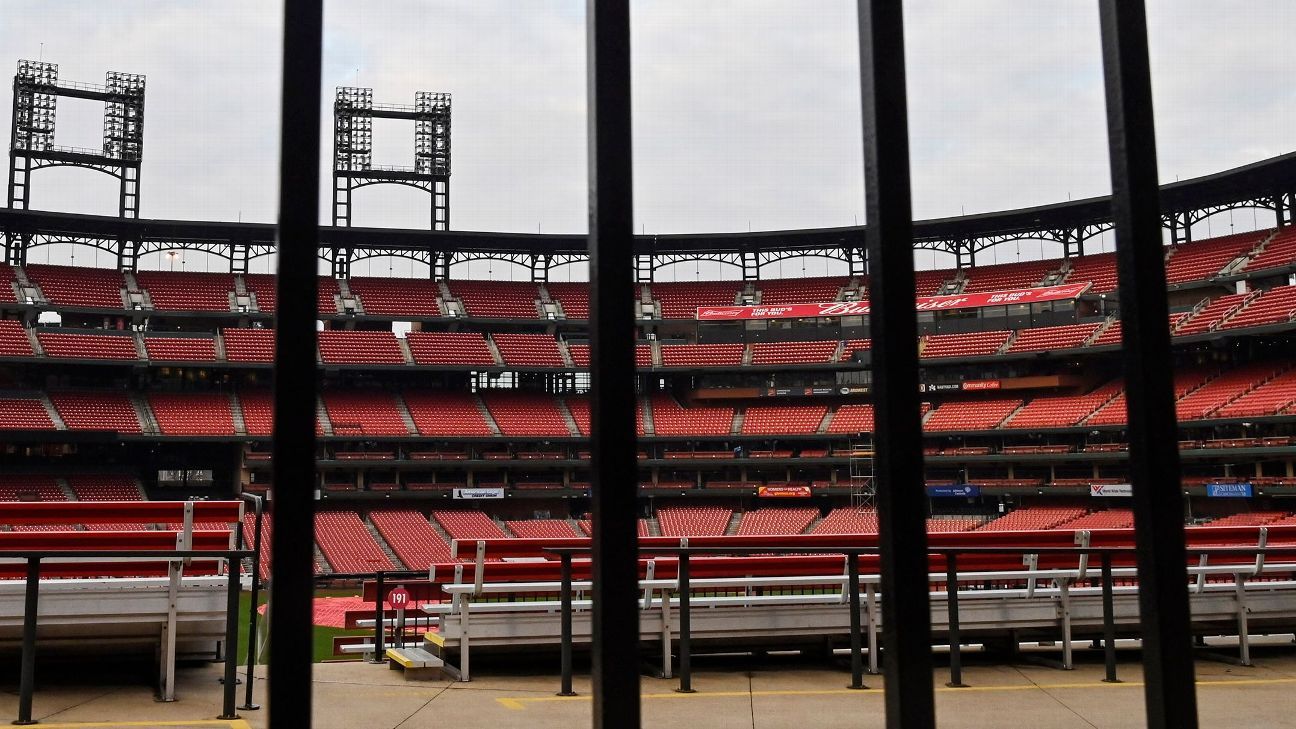Major League Baseball’s ambitious return-to-play plans include processing upward of 10,000 coronavirus tests per week, overhauling stadiums and in-game settings to encourage social distancing, and rigorous rules intended to prevent against the spread of COVID-19, according to a draft of the league’s health-and-safety manual obtained by ESPN.
The document, which is missing multiple sections, will swell beyond its robust 67 pages when complete. In this form, it is still a highly detailed road map that would require a staggering amount of effort to complete before the league’s hopeful mid-June return to facilities and early-July opening day.
Even with the manual’s specificity, multiple officials who have seen it expressed to ESPN skepticism about the ability to implement it, especially in a short time frame. While its thoroughness in some areas is apparent, a number of questions are left unanswered — an issue that will be addressed as the league and MLB Players Association continue negotiating their own return-to-play deal and MLB solicits feedback on the protocol.
For now, it covers testing, travel, in-stadium adjustments, on-field changes and a wide array of other issues. Players and other team personnel not participating in the game would sit in stands, separated by at least 6 feet. They would apply the same distancing standards to the national anthem. High-fives, fist bumps and hugs would be prohibited under the plan, as would be spitting, tobacco use and sunflower seeds. Pitchers would have their own set of balls to throw during bullpen sessions. Players would be discouraged from showering at stadiums after games and would not be allowed to take taxis or use ride-sharing apps on the road.
For all of the shock at how baseball — and the lives of those playing it — may look, the health protocols underpin the manual. MLB would break individuals into safety tiers, with Tier 1 (players, on-field personnel and medical personnel) and Tier 2 (other “essential” employees, including front-office officials) receiving consistent testing. Around 100 individuals would comprise the top two tiers, with other personnel that don’t necessarily interact with them, such as cleaning crews and groundskeepers, in Tier 3.
Under the plan, players would undergo multiple temperature screenings daily, including at home before coming to the stadium. MLB would test Tier 1 and 2 individuals for coronavirus multiple times a week, according to the document, calling testing “a critical component” of the game’s return. Family members would be tested, too.
Additionally, the document said the league “will offer free diagnostic and antibody/serology testing … for healthcare workers or other first responders in the Clubs’ home cities as a public service.”
Those who test positive would be immediately quarantined, though the document does not specify what would happen if a Tier 1 or 2 individual — who are the only ones allowed to travel — gets diagnosed with COVID-19 on the road. The return from a positive test would require two negative tests, no symptoms and a go-ahead from team medical personnel.
Though the document says “high-risk individuals” who could be at risk if they are infected with COVID-19 can opt out of playing, it does not address others with similar concerns.
Players would be required to wear masks everywhere except on the field and during strenuous activities. Their activities outside the stadium would change, too, particularly on the road, where they would not be allowed to leave the hotel to eat at restaurants. Even at home, Tier 1 and 2 individuals would be discouraged from going to crowded bars.
“MLB will not formally restrict the activities of Covered Individuals when they are away from work,” the document said, “but will expect the members of each team to ensure that they all act responsibly. The careless actions of a single member of the team places the entire team (and their families) at risk, and teams should agree on their own off-field code of conduct for themselves and their family members to minimize the risk to the team.”
The plan would call for a three-phase spring training, in which pitchers and catchers would arrive, then position players. The third phase would include a limited number of exhibition games.

